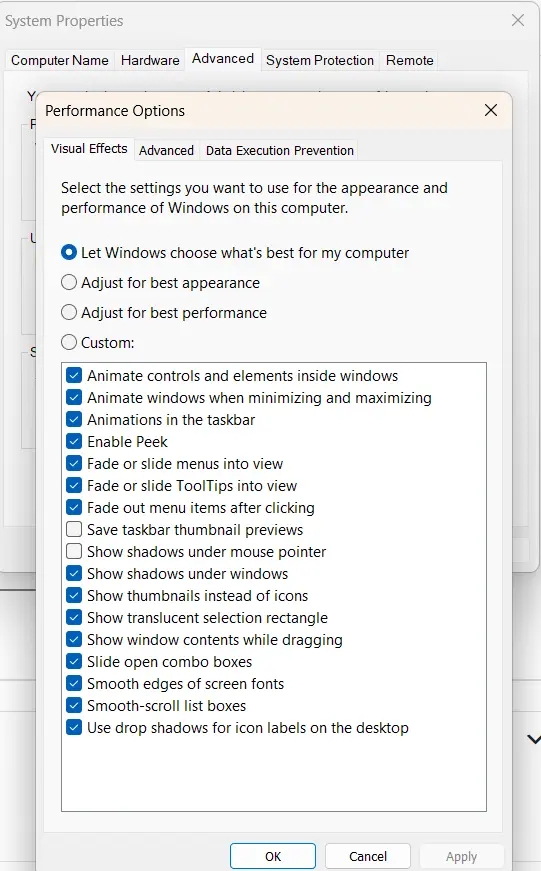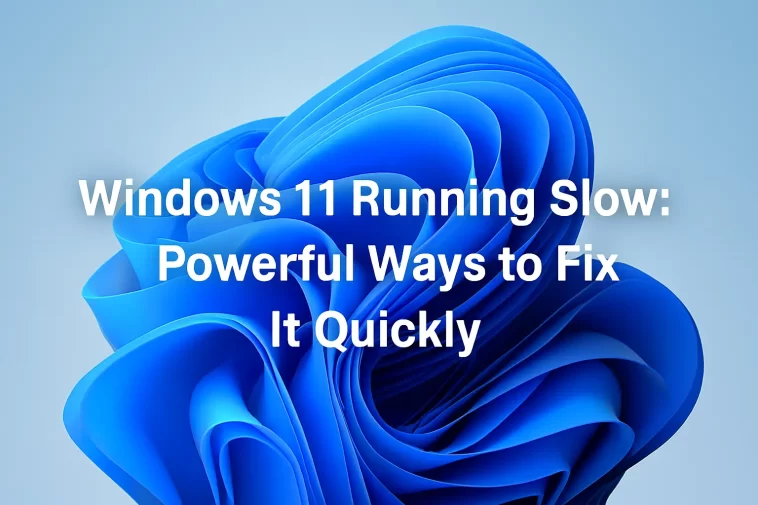Windows 11 running slow is one of the most frustrating things that can happen when you’re trying to work, study, or simply browse the internet. Many users upgrade expecting a faster, modern experience, only to find that their PC begins lagging, freezing, or taking ages to start apps. If you are dealing with slow performance, don’t worry — you are definitely not alone, and there are real, practical solutions.
In this guide, I will explain why Windows 11 is running slow and exactly what you can do to make it faster again. These methods are simple, effective, and suitable for both beginners and advanced users. Whether your computer is brand-new or several years old, these tips can make a significant difference.
Why Windows 11 Running Slow Is Such a Common Problem
Before fixing anything, it helps to understand what causes Windows 11 to perform poorly. The operating system is designed with new features, animations, hardware requirements, and background processes that sometimes overwhelm older or underpowered devices.
Here are the most common reasons why Windows 11 running slow becomes a real issue:
1. Not Enough RAM
Windows 11 can technically run on 4GB RAM, but that doesn’t mean it should. With modern browsers, apps, and background processes, 4GB is simply too low.
2. Too Many Startup Programs
Apps that launch automatically when Windows starts can use CPU, RAM, and disk resources without you knowing.
3. Background Processes and Services
Windows 11 has additional built-in services such as Widgets, Microsoft Teams, Copilot, and various security features that may slow things down.
4. Hard Drive Instead of SSD
If your system still uses an HDD instead of an SSD, performance will be significantly slower. Windows 11 practically requires an SSD for a smooth experience.
5. Outdated Drivers
Old graphics, chipset, or network drivers can cause slowdowns and system delays.
6. Low Disk Space
When your system drive (usually C:) runs out of free space, Windows becomes sluggish because it can’t create temporary files properly.
7. Viruses or Malware
Suspicious processes running in the background can drain your resources.
How to Fix Windows 11 Running Slow — Step-By-Step
Below are the best and most reliable ways to make Windows 11 faster. You do not need to try all of them — just start from the top and work your way down.
1. Disable Unnecessary Startup Apps
One of the easiest ways to boost performance is to stop apps from launching automatically.
How to do it:
- Right-click the Start button
- Select Task Manager
- Go to Startup apps
- Disable apps you don’t need to open automatically
Look for apps like Steam, Discord, Teams, Spotify, or Adobe services — these often slow down startup.

2. Free Up Storage Space
Windows 11 works best when you have at least 20–30 GB of free space.
Try the following:
Use Storage Sense
- Go to Settings → System → Storage
- Turn on Storage Sense
Delete Temporary Files
- Open Settings → Storage
- Click Temporary Files
- Select everything except Windows Update Cleanup and remove them
Uninstall Unused Programs
- Open Settings → Apps → Installed Apps
- Delete apps you no longer use
This step alone can significantly help if Windows 11 is running slow because of disk pressure.
3. Switch from HDD to SSD
If your system uses a mechanical hard drive, upgrading to an SSD will make the biggest difference. Windows will boot faster, apps will launch instantly, and overall performance will improve dramatically.
Even a cheap SATA SSD is enough to transform your PC.
4. Increase Virtual Memory (Paging File)
Windows uses virtual memory when your RAM is full. Increasing it can prevent lag.
How to increase virtual memory:
- Open Start and type Advanced system settings
- Under Performance click Settings
- Go to Advanced tab → Change under Virtual Memory
- Uncheck Automatically manage
- Set both initial and maximum size to a number larger than your RAM (e.g., 4096 for 4GB RAM, 8192 for 8GB RAM)
Click OK and restart.
5. Turn Off Visual Effects
Pretty animations look nice, but they reduce performance.
Turn off animations:
- Open Start → search Adjust the appearance and performance of Windows
- Select Adjust for best performance
- Click Apply
This will make your PC feel much faster, especially if your device is older.

6. Check for Viruses and Malware
Use Windows Security:
- Open Windows Security
- Select Virus & threat protection
- Run a full scan
Malware often causes mysterious resource usage, overheating, and freezing.
7. Update Windows and Drivers
Old versions cause instability and poor performance.
To update Windows:
Settings → Windows Update → Check for updates
To update drivers:
- Install the latest GPU drivers (NVIDIA, AMD, Intel)
- Update chipset and network drivers from your motherboard or laptop manufacturer
8. Disable Background Apps
Windows 11 allows many apps to run in the background even when you’re not using them.
How to disable background apps:
- Settings → Apps → Installed Apps
- Click the three dots → Advanced Options
- Under Background app permissions, select Never
Repeat for apps you don’t want consuming memory.
9. Perform a Disk Cleanup with Command Prompt
Run these commands to fix corrupted system files:
Step 1: System File Checker
sfc /scannow
Step 2: DISM Cleanup
DISM /Online /Cleanup-Image /RestoreHealth
This fixes Windows corruption issues that make the system slow.
10. Reset Windows Without Losing Files
If nothing works, resetting Windows 11 often restores performance:
- Settings → System → Recovery
- Select Reset this PC
- Choose Keep my files
Your PC will feel like new again.
Final Thoughts: Making Windows 11 Fast Again
If Windows 11 running slow has been ruining your productivity or daily usage, the good news is that most performance problems can be fixed quickly. Whether it’s disabling unnecessary apps, cleaning up storage, upgrading hardware, or adjusting system settings, even small changes can lead to big improvements.
Windows 11 is a modern operating system, but like any software, it needs maintenance. Taking a few minutes to optimize your settings can give you a faster, smoother, and more reliable experience.
Try the steps above and your PC should feel noticeably more responsive.

